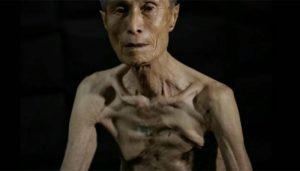 Tokyo: Prominent nuclear disarmament campaigner Sumiteru Taniguchi, who was delivering mail in Nagasaki when the United States dropped an atomic bomb in 1945, died Wednesday at the age of 88.
Tokyo: Prominent nuclear disarmament campaigner Sumiteru Taniguchi, who was delivering mail in Nagasaki when the United States dropped an atomic bomb in 1945, died Wednesday at the age of 88.
Taniguchi, once considered a front-runner for the Nobel Peace Prize, died of cancer at a hospital in the southwestern Japanese city, according to Nihon Hidankyo, a group that represents survivors of the atomic bombings of Nagasaki and Hiroshima.
The then-postman, aged only 16 when the attack happened in the closing days of World War II, suffered horrific burns to his back and left arm that took years to heal properly.
He had been riding his bicycle some 1.8 kilometres (1.1 miles) from the epicentre of the blast.
“All of a sudden, after seeing a rainbow-like light from the back, I was blown by a powerful blast and smashed to the ground,” he said at a commemoration ceremony for the Nagasaki bombing in 2015.
“When I woke up, the skin of my left arm from the shoulder to the tip of my fingers was trailing like a rag. I put my hand to my back and found my clothing was gone, and there was slimy, burnt skin all over my hand.
“Bodies burned black, voices calling for help from collapsed buildings, people with flesh falling off and their guts falling out… This place became a sea of fire. It was hell.”
He became one of the few early faces of the bombing aftermath when US military pictures of him recovering in hospital, his entire back an agonising slab of melted flesh, were beamed around the world.
Taniguchi, who spent about three-and-a-half years in hospital after the blast, went on to become a prominent disarmament campaigner, making dozens of speeches both in Japan and overseas about his experience.
“I fear that people, especially the younger generations, are beginning to lose interest,” he said in a 2003 interview with AFP.
“I want the younger generations to remember that nuclear weapons will never save humanity. It is an illusion to believe that the nuclear umbrella will protect us.”
The US dropped the first atomic bomb on Hiroshima on August 6, 1945, killing around 140,000 people. The toll includes those who survived the explosion itself but died soon after from severe radiation exposure.
Three days later the US dropped a plutonium bomb on the port city of Nagasaki, killing some 74,000 people.
Bureau Report
Leave a Reply